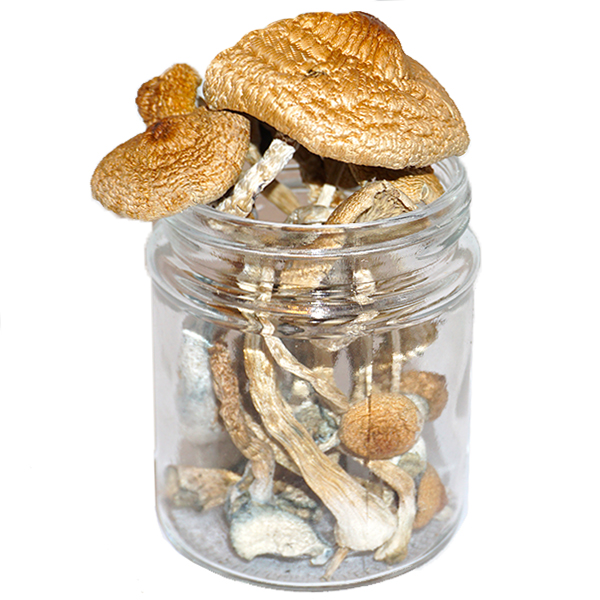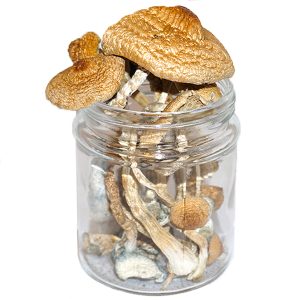Mushrooms For Mood or Hype. When looking at macrodosing vs. microdosing, there are many ways we can distinguish between these two ways of taking psychedelics. Of course, the obvious difference is that one involves taking small doses while the other one, the way people have traditionally used psychedelics, means you take larger doses.
But the difference in dose between macrodosing and microdosing is significant: The experience of one is nothing like the former. And the outcomes of the two tend to be distinct as well.
Macrodosing vs. Microdosing: Understanding The Dosages – Mushrooms For Mood or Hype
A macrodose tends to result in drastic perceptual, cognitive, and emotional changes. A macrodose could be anywhere between a threshold dose (the dose at which perceptual changes become noticeable) and a heroic dose (where effects like ego death are possible).
On the contrary, a microdose tends to be defined as a tenth to a twentieth of a normal recreational dose of a drug. Microdoses typically involve classic psychedelics (e.g. LSD, DMT, psilocybin, mescaline), but you can also microdose non-classic psychedelics (e.g. 4-AcO-DMT) and other psychoactive drugs (e.g. cannabis, MDMA).
This dose should be sub-perceptual, in that it does not cause effects like seeing objects morph or geometric patterns with eyes open or closed. Because the dose is so low, a microdose should not cause other classic psychedelic effects, like mystical experiences and intense emotional states.
Individual Dosing Differs
However, the line between macrodosing and microdosing is not clear.
Where is the precise point at which perceptual effects occur? How can we distinguish between aesthetic enhancement (where the world looks “nicer” and more vibrant on a microdose) and perceptual distortions? Does the feeling that the world has become brighter and more colorful mean a person has taken more than a microdose? There are no simple answers to these questions.
Also, what is a microdose for one person may not be the same for another. This is because people have differing levels of sensitivity to psychedelics.
An individual who is highly sensitive to these compounds may need to take much less than someone else to get the effects from microdosing they want. If he or she were to take a bigger dose, which for someone else is an ideal microdose, this could end up being a threshold dose for that individual.
So, while in theory we can easily distinguish between macrodosing and microdosing, doing so in practice is another matter altogether.
Macrodosing vs. Microdosing: The Different Effects – Mushrooms For Mood or Hype
One crucial way to analyze macrodosing vs. microdosing is to look at the different experiences that both lead to.
Effects Of Macrodosing
The subjective effects of macrodosing are more significant and impactful compared to those from microdosing.
Visual Effects
- Color enhancement
- Depth perception distortions
- Objects morphing
- Color shifting
- Tracers
- Geometric hallucinations
Auditory Effects
- Enhancement
- Distortion
- Hallucinations
Cognitive Effects
- Introspection
- Delusion
- Increased music appreciation
- Increased sense of humor and laughter
- Thought acceleration
- Time distortion
Emotional Effects
- Euphoria
- Bliss
- Joy
- Empathy
- Compassion
- Anxiety
- Fear
- Panic
Mystical Effects
- Ego death
- Transcendence of time and space
- A sense of the holy, sacred, or divine
- Feelings of unity or interconnectedness
- Ineffability
Physical Effects – Mushrooms For Mood or Hype
- Pupil dilation
- Excessive yawning
- Increased heart rate
- Nausea
- A pleasurable tingling sensation
- Physical euphoria
- Sedation
- Perception of bodily heaviness
- Motor control loss
Many people who macrodose — whether in a clinical setting, in a group, or somewhere like an ayahuasca retreat — also report a number of benefits. These include some of the below.
- Recovery from (or significant improvements in) depression, anxiety, obsessive-compulsive disorder (OCD), post-traumatic stress disorder (PTSD), alcoholism, and drug addiction
- More open-mindedness
- Greater connections to nature (known as nature-relatedness)
- The loss of the fear of death
- A stronger sense of meaning
- More authenticity
- Access to more positive emotions, like joy, gratitude, awe, and compassion (towards both oneself and others)
- Leading a more spiritual life, perhaps by practicing meditation to incorporate the psychedelic experience into one’s everyday life
- Finding the motivation to make major changes to aspects of one’s life, such as one’s relationships, career, hobbies, personal projects, goals, diet, and habits
Effects Of Microdosing – Mushrooms For Mood or Hype
If microdosing won’t provide any of the classic psychedelic effects, what can it do for people? Currently, there is conflicting evidence about what actual benefits microdosing can offer.
A 2021 study from Imperial College London found that the placebo effect may explain the benefits of microdosing. Then there have been some placebo-controlled studies showing microdoses of LSD have non-placebo effects.
Also, studies have found microdosers score higher on certain measures of well-being and cognition compared to non-microdosers.
But these kinds of studies, which rely on surveys, do not establish that microdosing actually cause any differences. It could be that people with better mental health are more likely to microdose, or that there is an unknown cause that makes people both more likely to microdose and be creative.
Regardless of the uncertainty about the true effects of microdosing, people claim that tiny doses of psychedelics lead to improvements in the following.
- Energy levels
- Mood
- Mental health (e.g. reductions in depression, anxiety, rumination)
- Concentration
- Productivity
- Relationships
- Microdosing shrooms can bring a better connection to self
- Creativity
- Lifestyle habits
Macrodosing vs. Microdosing: What The Science Says – Mushrooms For Mood or Hype
As already mentioned, the evidence base for the effectiveness of microdosing differs from that of macrodosing.
There are many promising anecdotal reports from microdosers on how tiny doses of psychedelics have transformed their mental health, relationships, and who they are as people. But we don’t know if the placebo effect is driving these benefits (and, if so, to what extent).
When it comes to macrodosing, on the other hand, many rigorous, placebo-controlled studies have been conducted, showing significant benefits. Let’s take a look at some of the most important studies on microdosing and macrodosing.
Research On Microdosing
Randomized controlled trials (RCTs), considered the “gold standard” of research, have revealed the following about microdosing.
- A 2019 study published in the journal Biological Psychiatry found that microdoses of LSD produced dose-related subjective effects (meaning the effects increased as the dose was increased). However, these microdoses did not have a significant effect on working memory and cognitive functioning, and creativity was actually worsened.
- Per a 2020 study from the journal European Neuropsychopharmacology, microdoses could improve positive mood, friendliness, and attention, but they can also lead to increased confusion and anxiety.
- A 2020 study from the Journal of Psychopharmacology found that a microdose of LSD could decrease people’s pain perception.
It should be noted that some of these results find that non-placebo effects result from doses of 20 micrograms (mcg) of LSD. This would be, for many people, too high to be a microdose.
Other than placebo-controlled studies, there is other research indicating the potential benefits of microdosing.
- Per a 2021 study from Scientific Reports, adults who microdose experience lower levels of anxiety and depression compared to non-microdosers.
- A 2021 study published in Psychopharmacology revealed that microdosers score higher on measures of wisdom, open-mindedness, creativity – and lower on measures of unhealthy beliefs and negative emotions – than non-microdosers.
- From a 2019 study in PLOS One, microdosing reduces depression and mind wandering but increases neuroticism.
Macrodoses And Microdoses Are Taken In Different Contexts – Mushrooms For Mood or Hype
The final difference between microdosing and macrodosing is that the two different types of doses are taken in different contexts.
For example, when microdosing, your mind is not seriously altered. This means you can get on with your day as normal. A microdose should not impact your ability to function, work, or talk with others.
If taking a macrodose, conversely, don’t expect that you will be able to work or have a conversation with others as you normally would. Of course, a threshold or light dose of a psychedelic may mean you can do everyday activities, without anyone even noticing you were tripping. However, the higher you dose, the more likely it is that you will want to just focus on the psychedelic effects.
Macrodoses themselves are often taken in a range of different contexts, varying depending on factors like dosage and personal preferences. For example, a low dose may be suited for a creative activity, whereas a heroic dose probably won’t be — that would be more suited to inner exploration.
Now that we have examined macrodosing vs. microdosing in depth, you should have a better idea of what purposes these two different kinds of dosages can serve, as well as what the current science tells us about their effectiveness.
If your intention with using psychedelics is to encourage substantial improvements in your mental health, for instance, then macrodosing — in a supportive setting — would be the more reliable option.


